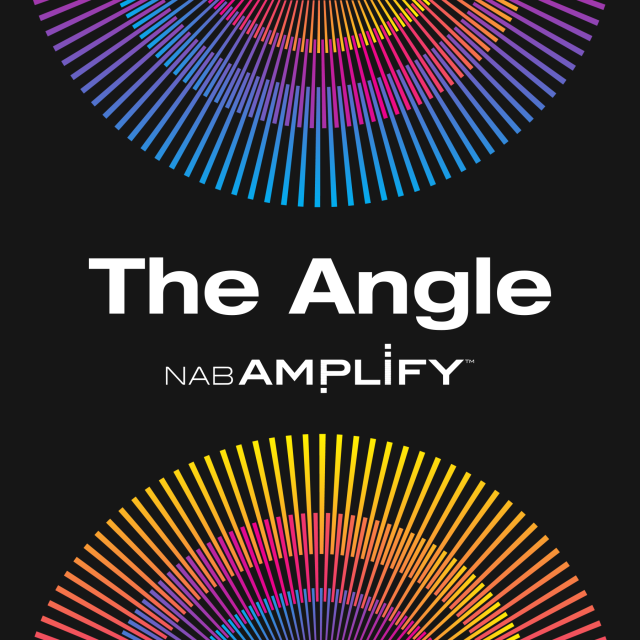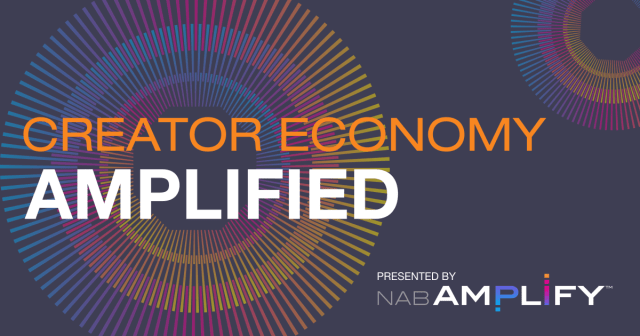
TL;DR
- The Creator Lab at NAB Show featured a session on “Investing In and With Creators,” exploring financial underpinnings of the Creator Economy, with Electric Monster CEO/co-founder Matt Gielen, GigaStar Partnership Manager Armand Galustian and The London Fund and Influence founder and CEO Ashesh Shah.
- As the Creator Economy’s size and significance continues to grow., venture capitalists and others are experimenting with a variety of ways of funding creators and monetizing their content effectively.
- All three speakers noted the importance of scale and identifying value when investing in creators or identifying a potential opportunity.
You know creators are “gaining broader legitimacy within the economy when you’ve got Goldman [Sachs] coming out and saying this is a $500 billion industry by ’27,” observed Electric Monster CEO/co-founder Matt Gielen.
Gielen appeared on the Investing In and With Creators panel at the 2024 NAB Show’s Creator Lab. He was featured alongside GigaStar Partnership Manager Armand Galustian as well as The London Fund and Influence founder and CEO Ashesh Shah.
Moderated by Inside the Creator Economy Editor and Publisher Jim Louderback, the discussion considered funding models and business strategies for creators and those who want to invest in them.
Gielen spoke on behalf of Electric Monster, a digital studio that “acquires and scales up digital video properties,” with a particular emphasis on YouTube. It’s also an outgrowth of agency Little Monsters, which was started to help “brands scale their audiences on YouTube.”
“Our thesis is essentially to find channels and outlets that are producing content in a repeatable format, and an advertiser friendly or desirable vertical. And then to either work with the founders or build a team around that to build them into, you know, fully developed media brands,” explained Gielen.
“We’re not in the loans business at all. We’re not taking any control over your channel. This is no rev share,” he said.
Electric Monster, Gielen emphasized, is a digital studio that distributes its content “digitally first.” He said, “We just look at ourselves as a part of that overall content consumption economy across the board.”
“Ideally, as we grow and acquire more assets, or develop them ourselves, we’re just the studio that makes content and hopefully we have expertise across all different types of content,” he said.
Gielen also cited several notable companies, including Lunar X, Theorist Media and Mythical: “These are sizable businesses, employing…sometimes hundreds of people to operate these outlets.”
They also generate revenue not only from social video content, but they also successfully merchandise, license, syndicate and even launch live events. In turn, these brands may also go on to invest in new Creator Economy companies as well.
Despite his optimism, Gielen acknowledged that funding has been challenged for the past two years, after the initial “crest.” He said, “I don’t know if that’s beginning to open up. But it does seem like there’s a lot more capital interest in what we’re doing.” But he hopes to “have easier conversations” as the economy at large stabilizes.
Creating a Virtuous Circle for Creator Funding
“It’s a two-way street: You’re bringing your audience along for the ride, and if you believe enough in the channel, you have the opportunity to invest,” said Galustian, who represented GigaStar, which he described as “a platform that connects creators with investors.”
He explains that creator-investor relationships are typically based on the premise that creators exchange a portion of future earnings for upfront financing, giving investors the opportunity to “partake in the overall growth of creator’s channels.”
Galustian has “an existing network of 12,000-plus investors that are ready to go already. And if a creator does it the right way, in terms of promotions, right, they go on their YouTube channel, like, ‘Hey, I’m doing this …thing.’ They bring their audience along for the ride. So that network, or that network base, of investors is just primed to expand.”
And he pointed out that “anybody can be an investor” at their company. He said that their model ensures that they will have “a very diverse range of investors.”
So how does it work? Notably, Galustian says, “The creator takes away every penny. There’s no control over your channel.There’s no paybacks. But that channel sits in perpetuity” for one year, at which point they can “unlock the secondary market.” (He compares it to the trading app Robinhood, explaining “Every purchase or sale that takes place within the secondary market, that transaction fee is allocated then to the creator.”)
Galustian said he wants to create a “hub of fundraising for creators” via GigaStar.
Galustian said, “Obviously, investors do identify the opportunity that we have, using our platform, and as YouTube continues to grow, it’s only going to make a stronger case for us.”
He offered some tips for identifying a potentially lucrative opportunity in the Creator Economy. Galustian said, “Format is super important. You want to target those channels that do have the higher value and CPMs.”
The value of the cost per thousand impressions correlates to the value of the channel, he explained, and “the longer the format, it only works to the benefit of both the creators and the investors.”
Building Creator Equity
Shah, a longtime venture capitalist, began investing in the Creator Economy around 2020 because, he said, “most of the money that we were raising and then giving to people in anything that was B2B or B2C was basically going to [Mark] Zuckerberg” at Meta, noting that they decided this “was a problem.”
“The creators and the people that were generating all the traffic and the views weren’t really seeing net returns,” he recalled.
“In fact, if they wanted to make any kind of equity play, or equity money, which would be sort of the big numbers, they were making about 15 to 20 cents on the dollar of all their taxes and fees. We figured out a way for them to contribute their voice and suddenly become limited partners inside our fund with no cash.”
In this model, Shah said, the creators are “in essence, are our full-on equity partners.” Also, he said, “These creators need to realize that there is a finite period in which you can do this. And we’re hoping that we’re kind of like their pension plan.”
Shah added that they treat this fund as they would “normal investment decisions” and monitor these investments and “get real-time data” to evaluate them.
When creators sign on, “they commit for about three years,” he said, during which time they will be tapped to “endorse” or educate their followers about companies in their portfolio via a designated number of posts annually.
To facilitate the amplification of the influencers, Shah said, “There’s a lot of tech underneath to coordinate how different individuals speak and when and how they create an impact.”
“It’s all on [block]chain underneath. We’ve got to track everyone’s key one. We’ve got to be compliant. We’ve got to make sure that all the micros are tracked,” Shah said.
He explained that they include “smart contracts” that enable tracking and transparency incomparable in “any other regulated market,” noting that they are not under FINRA and SEC supervision, but are still required to be licensed because they raise capital.
Shah said, “One of the things that we specialize in is how to make sure that the coordination of all these conversations that our LPs are having is done in a very trustworthy, but natural way.”
Shah said they’ve created “a collective” of individuals that in aggregate represent “$300-500 million worth of power.” On top of that, he said Influence is “a platform that we believe can scale to many, many billion dollars.”
What’s the future of funding in the Creator Economy? Shah thinks “rollups” are unlikely to dominate, for operational reasons, and he projected more “one-offs” in instances “where there’s a particular strategic advantage to acquiring an outlet or brand like that, or investing in a brand.”
“I think you’re just gonna see this more and more,” Shah predicted.
He also thinks the Creator Economy is five to 10 years away from “Disney-level” funding, in part because it’s “difficult to invest into a celebrity directly” as well as hard to evaluate the worth of those theoretical investments.
Nonetheless, Shah expects that limitations in ad space and algorithmic changes will force brands to turn to the Creator Economy and “authentic conversations” to drive growth.
Watch the full session in the video below:

Why subscribe to The Angle?
Exclusive Insights: Get editorial roundups of the cutting-edge content that matters most.
Behind-the-Scenes Access: Peek behind the curtain with in-depth Q&As featuring industry experts and thought leaders.
Unparalleled Access: NAB Amplify is your digital hub for technology, trends, and insights unavailable anywhere else.
Join a community of professionals who are as passionate about the future of film, television, and digital storytelling as you are. Subscribe to The Angle today!


